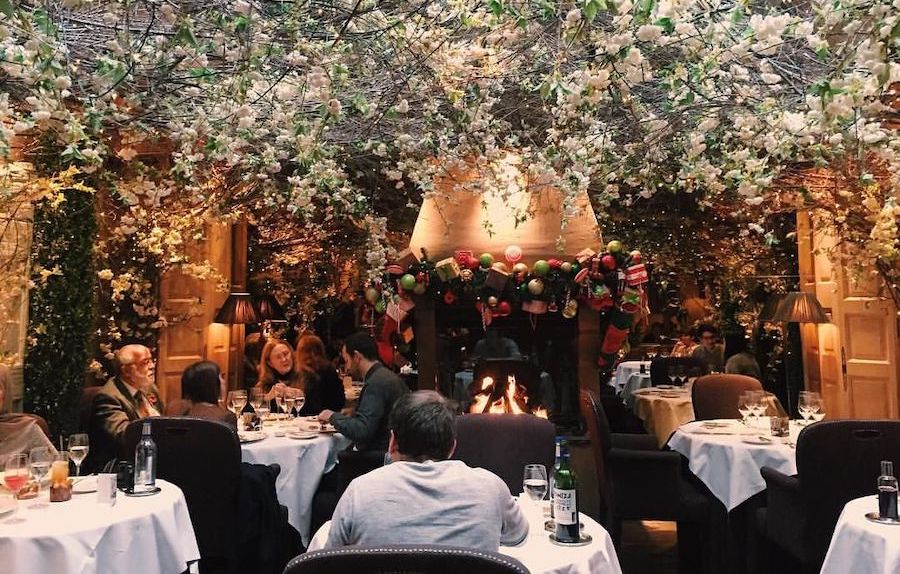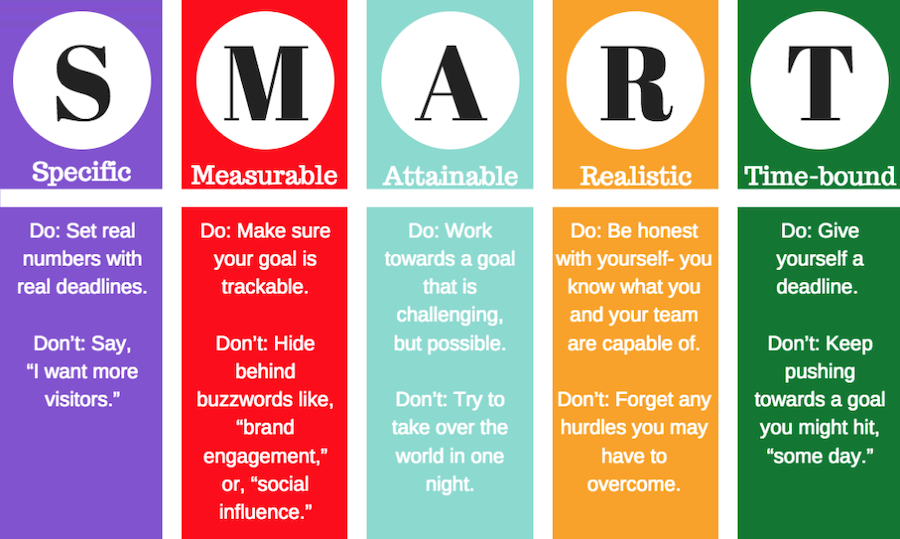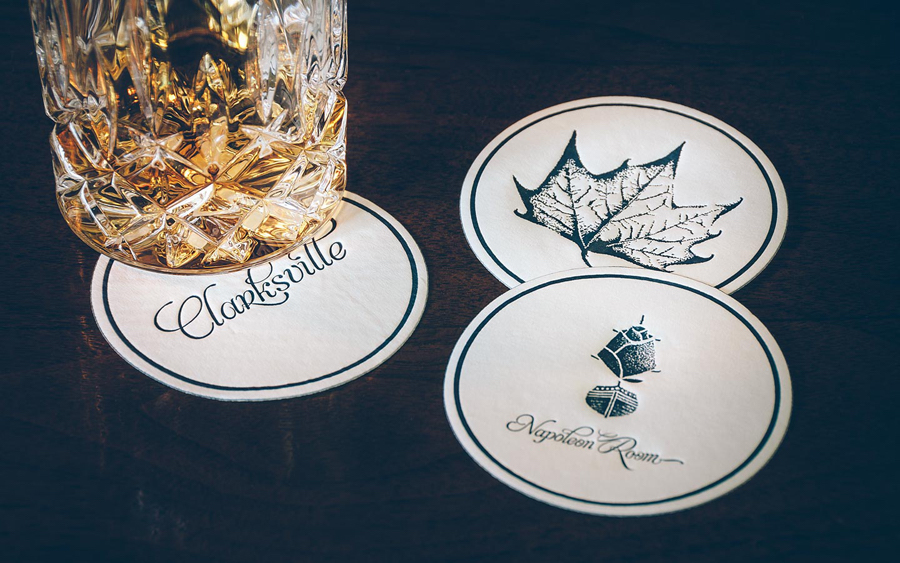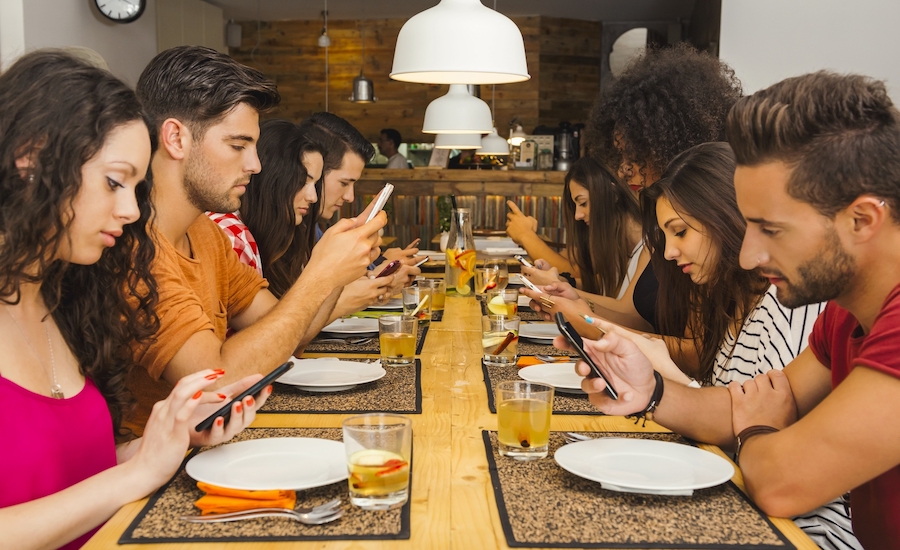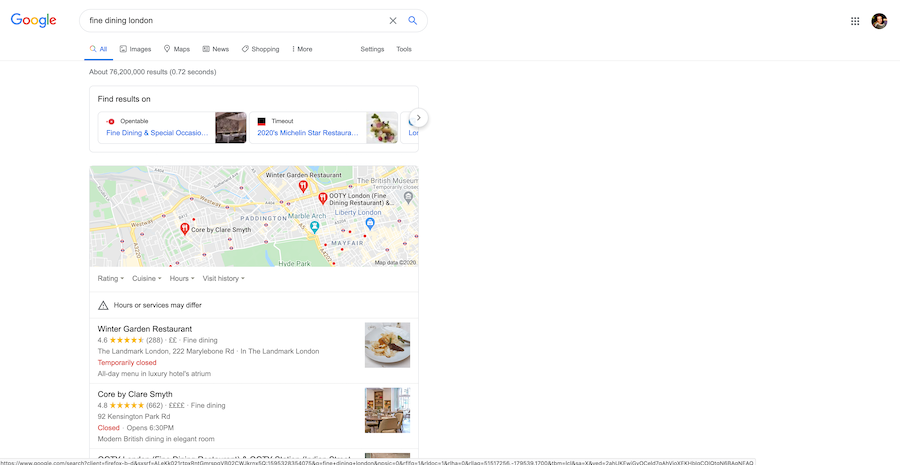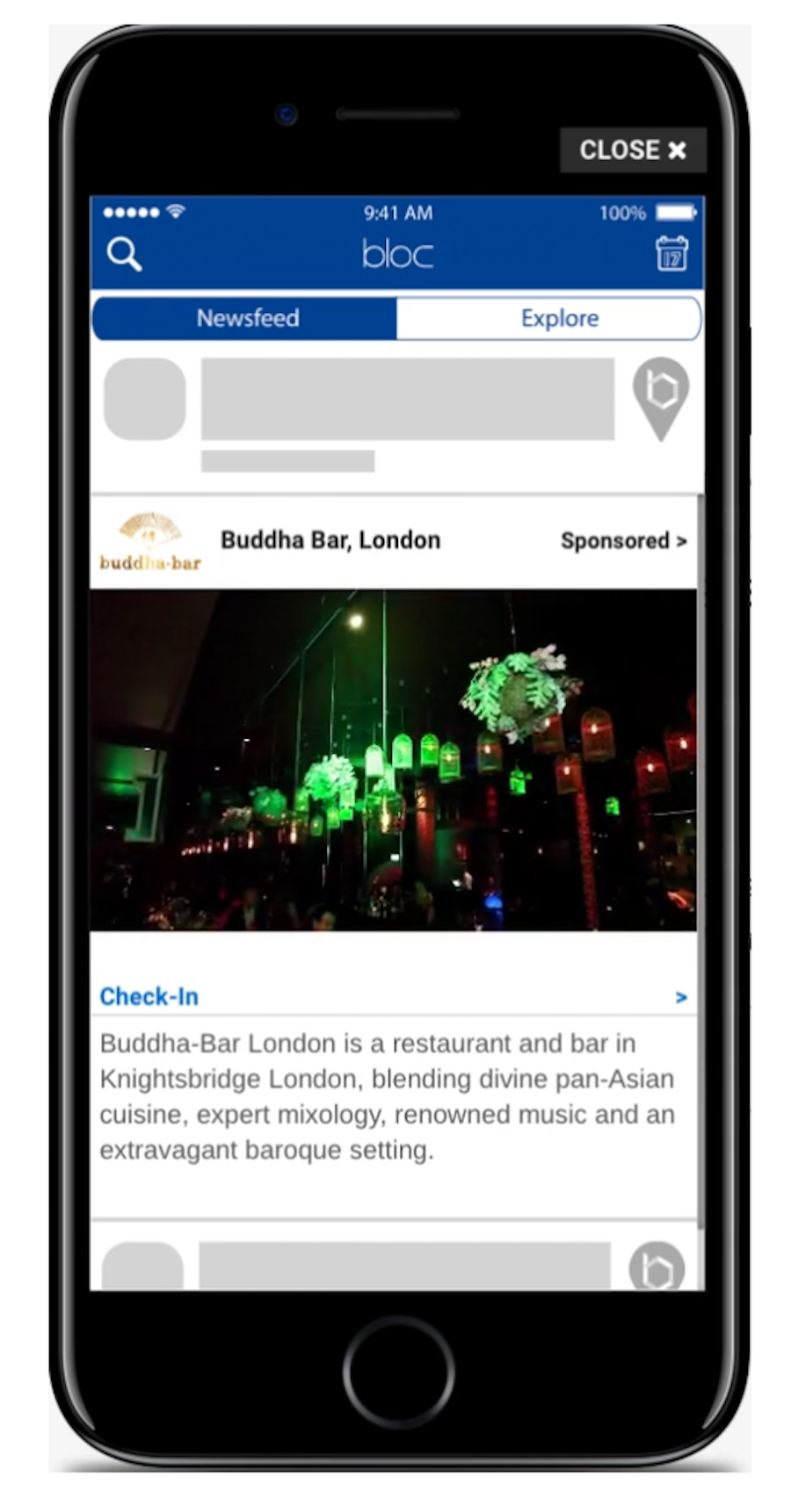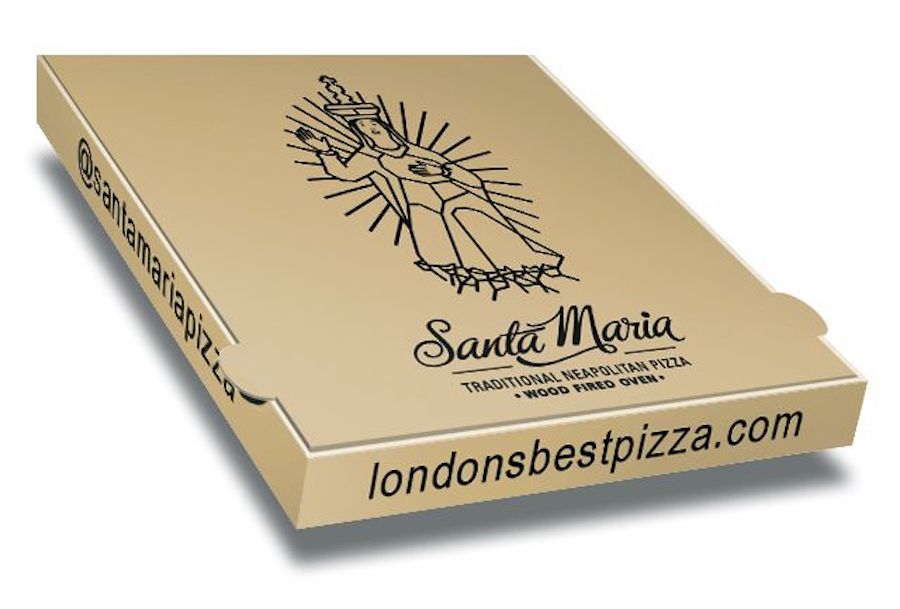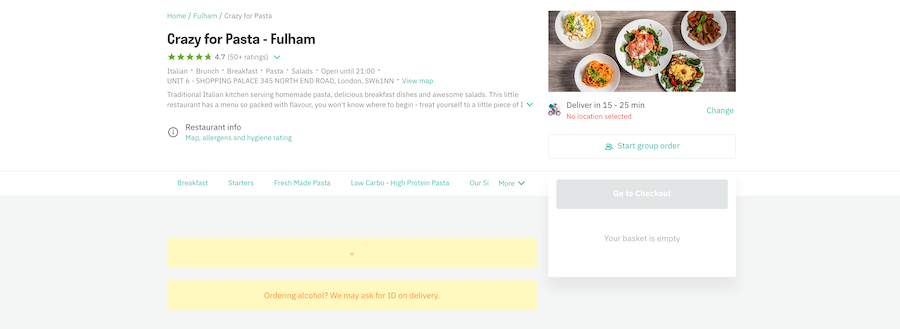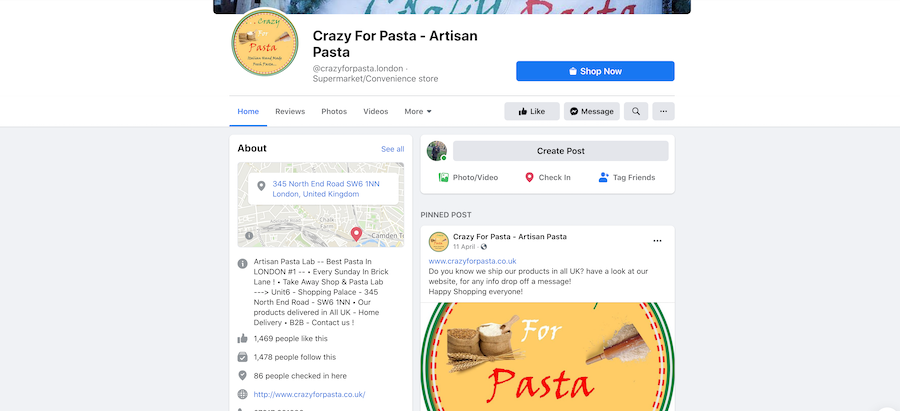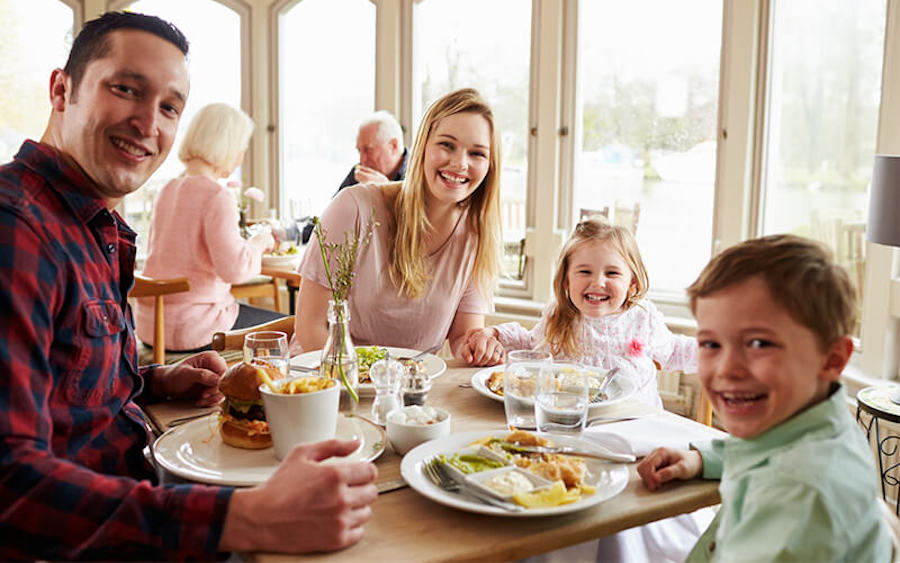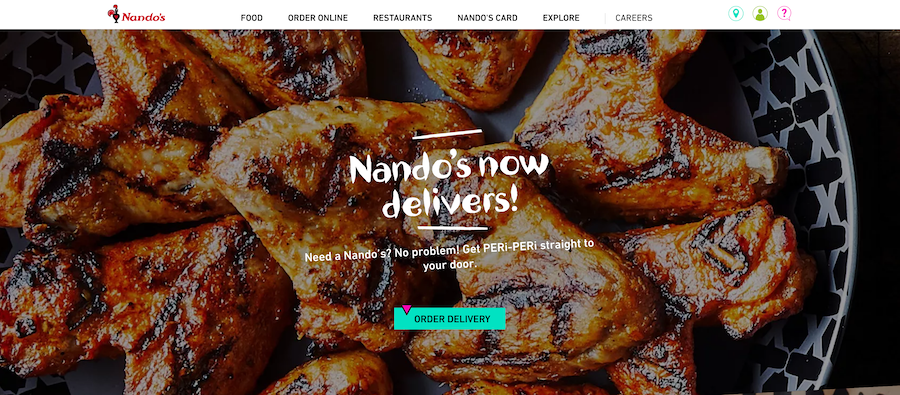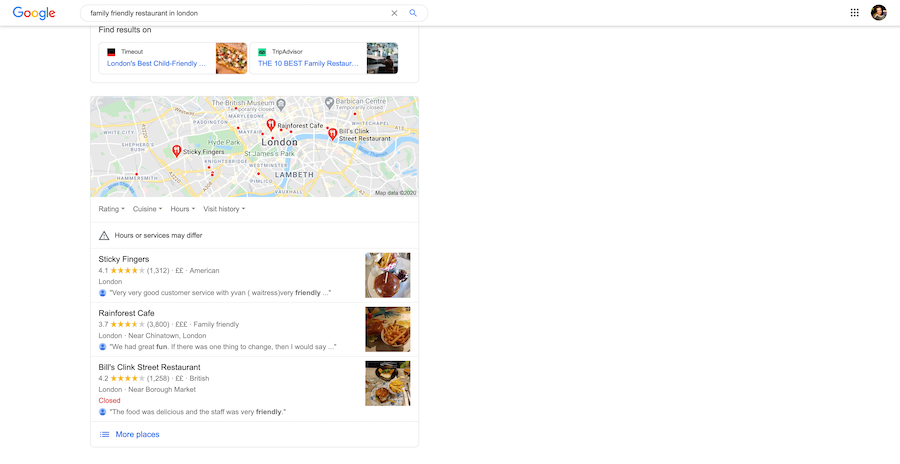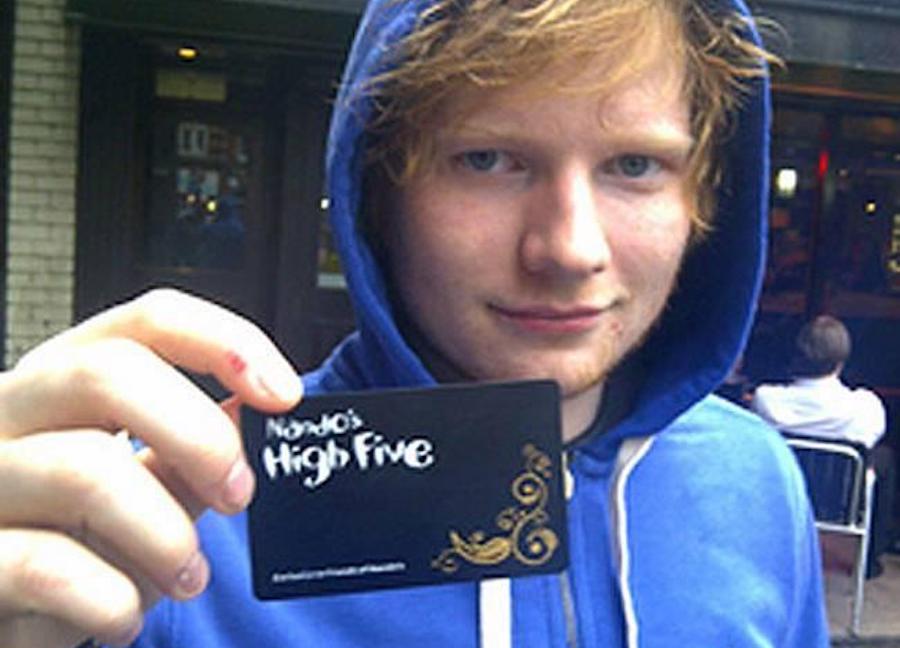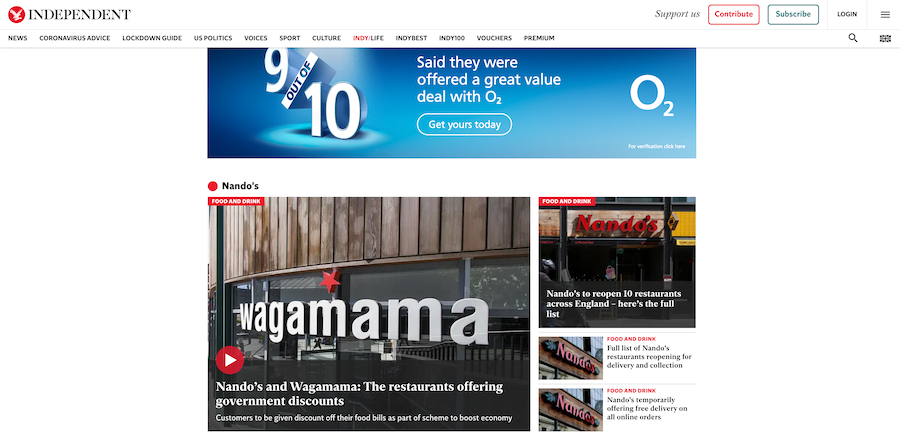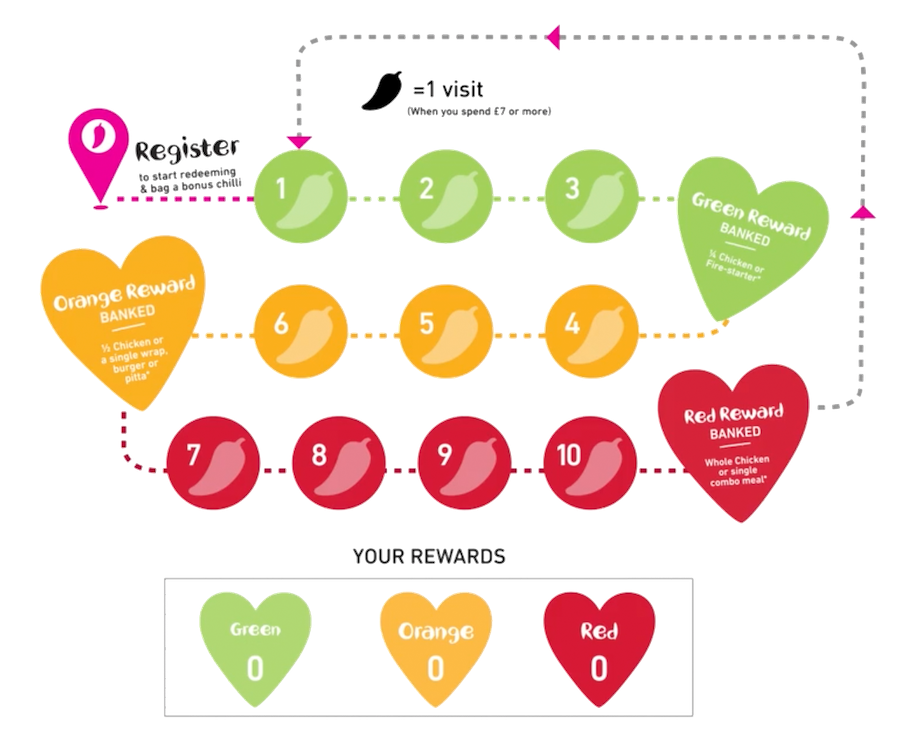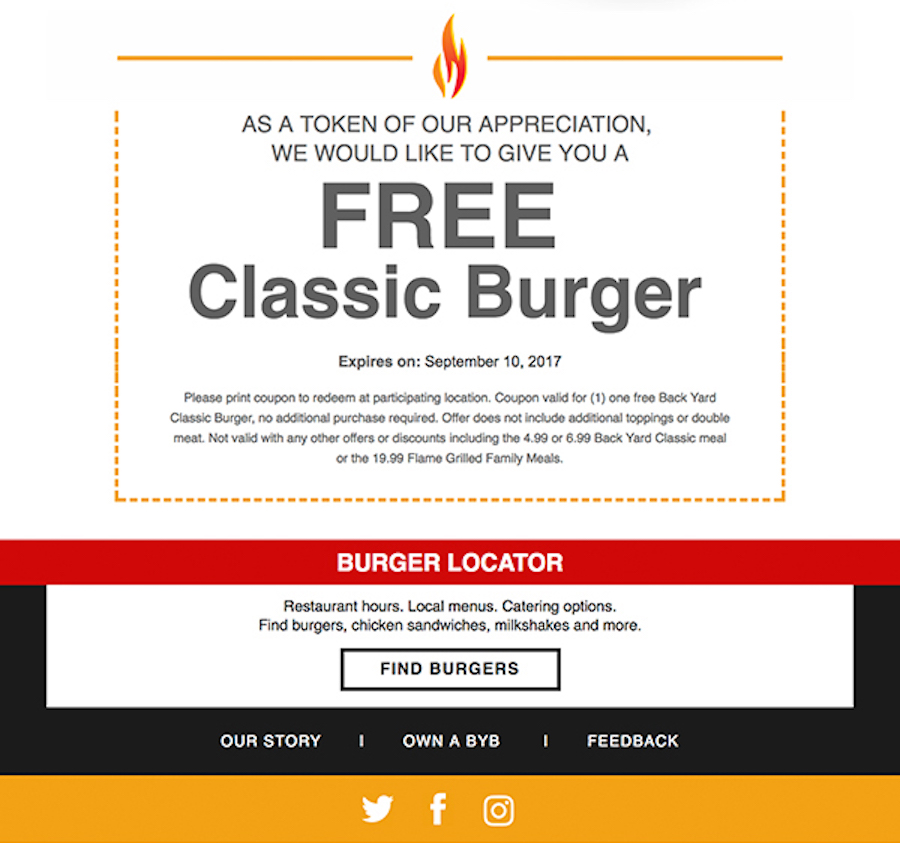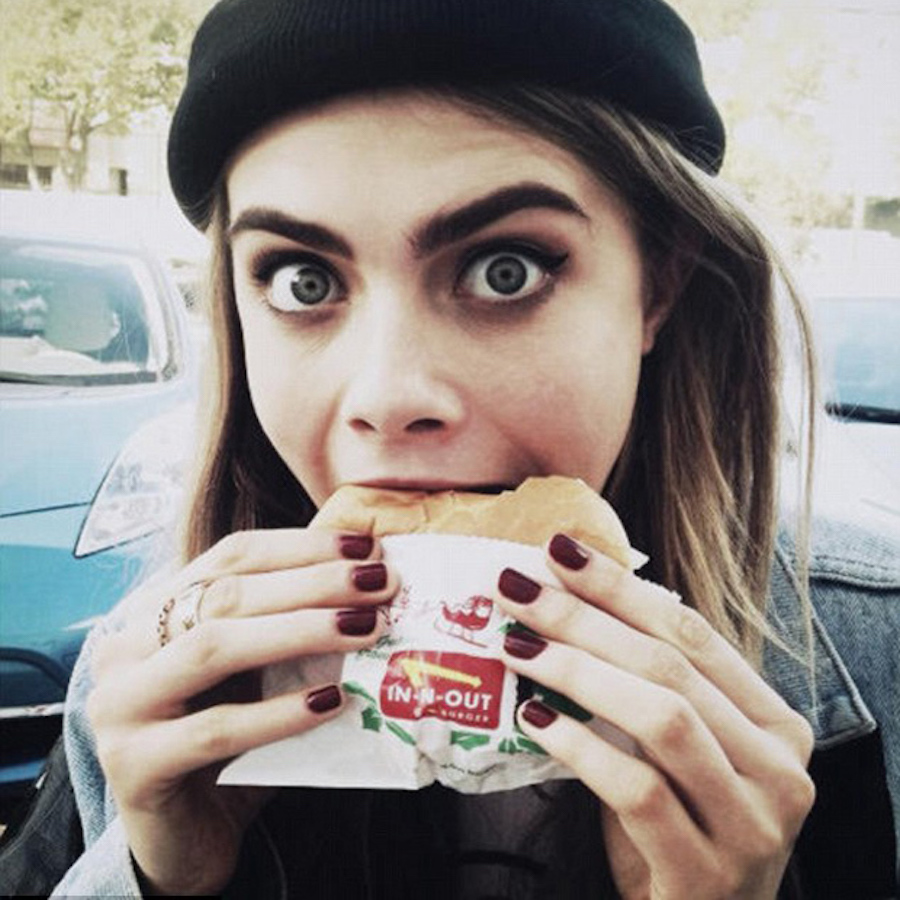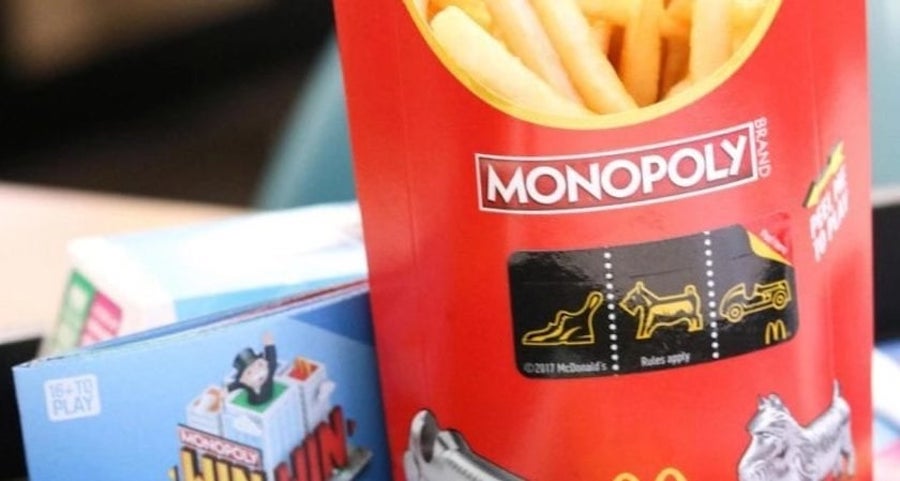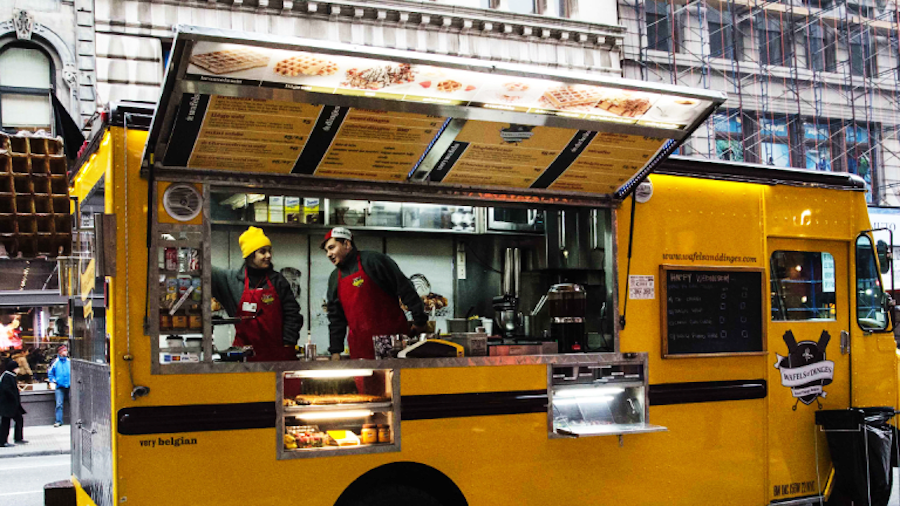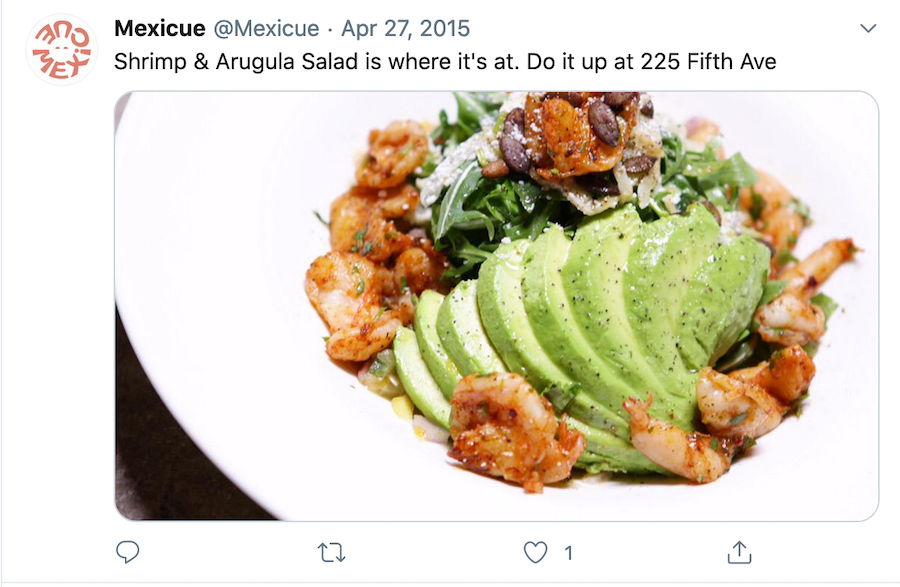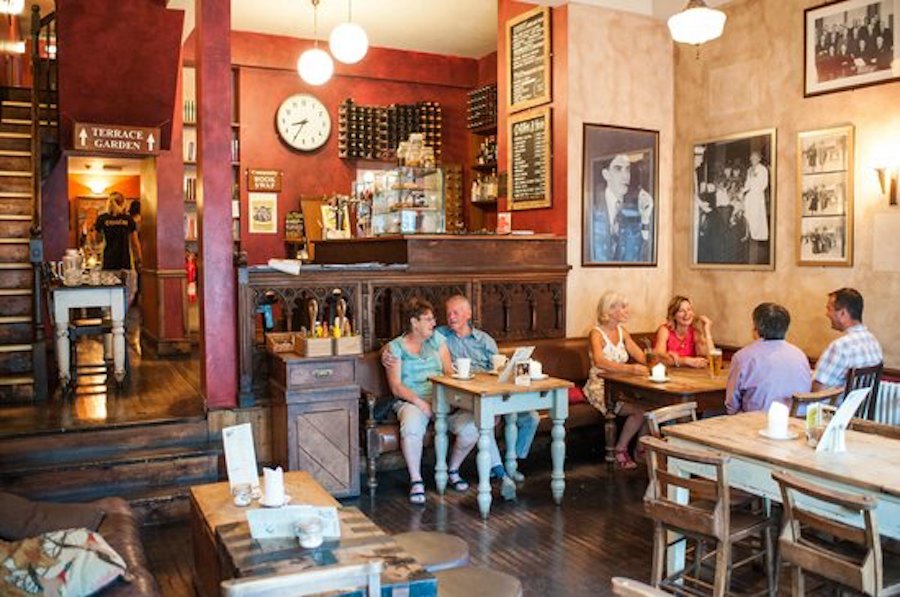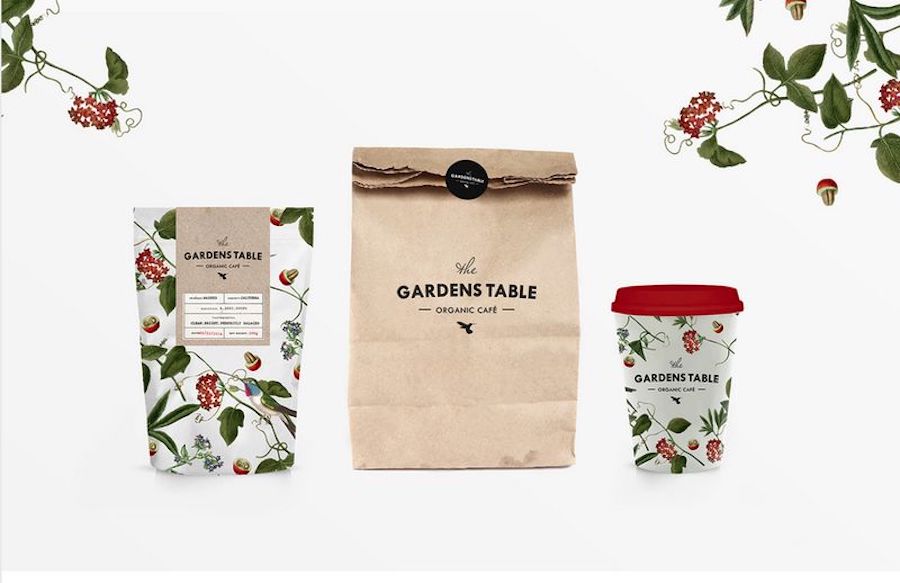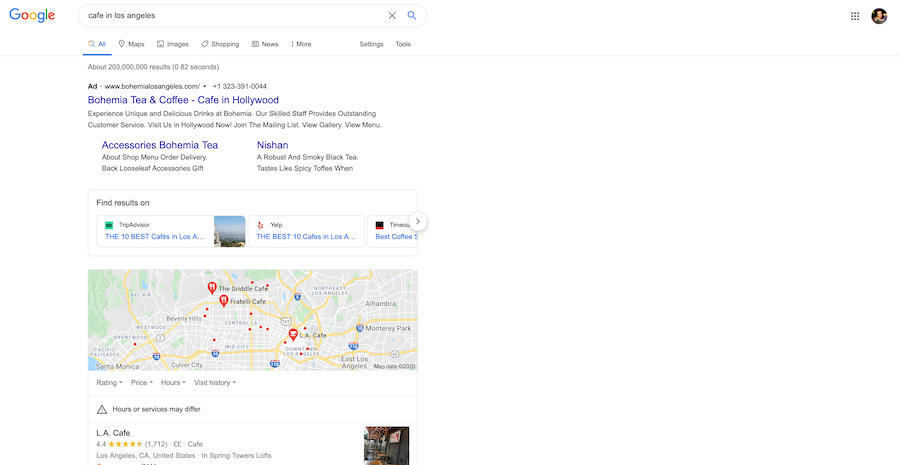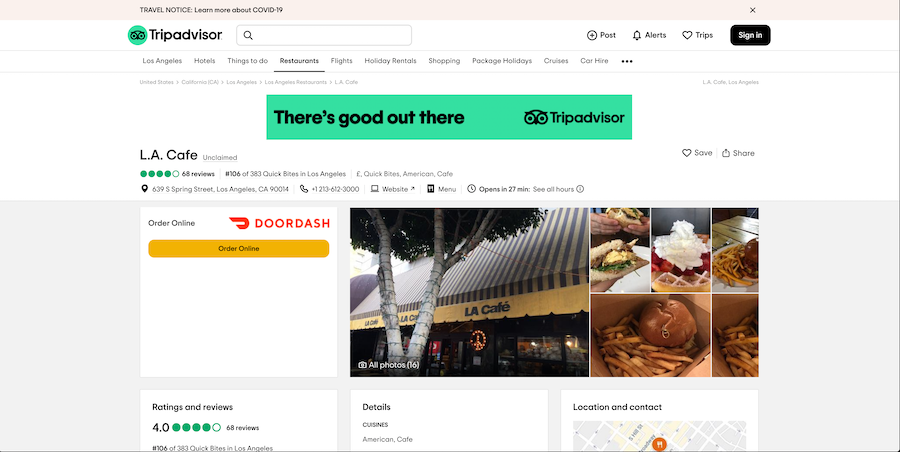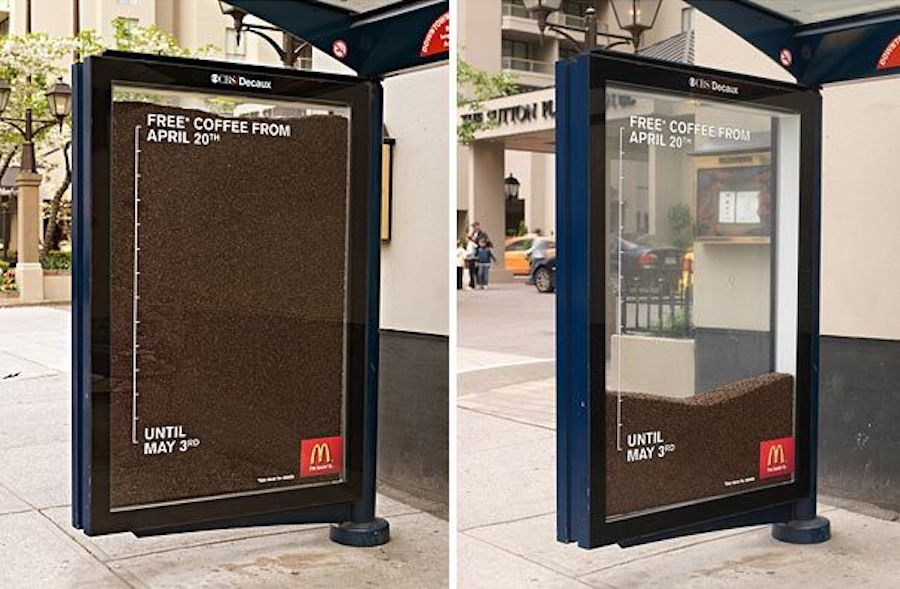Restaurant Marketing Strategies: The Best Ways to Advertise Restaurants
Having robust restaurant marketing strategies and a restaurant marketing plan is important for all types of restaurants.
Without a restaurant marketing strategy your results will suffer, and you will probably waste a lot of money.
This guide looks at what should be included in a restaurant marketing plan and also the different restaurant marketing strategies different types of restaurants can adopt.
First you can see what should be included in a restaurant marketing plan, then you will be able to select the type of restaurant that is more suited to your needs and see the different restaurant marketing strategies you should be using.
Restaurant Marketing Strategy Plan
At the top of your restaurant marketing plan should be your mission statement and core values.
This is to remind you, every time you open your plan, what your restaurant marketing strategies are trying to achieve and what your core values are.
It’s good to remind yourself of these as it’s easy to get consumed by the day-to-day running of a restaurant and forget about the business side of the restaurant. This is why so many restaurants fail, as they fail to do this.
Nando’s mission statement reads;
‘Our mission at Nando’s is to always deliver the ‘Nando’s experience’ to our customers. We will take you on a journey, your own voyage of discovery. You will come to discover how special it is to belong to the Nando’s family. You will experience our traditional hospitality, warmth and fun.’
Next, you need to write down your goals.
Your goals should be more specific to what your restaurant marketing strategies are going to achieve. It’s best to work to a 6-month timescale.
Any shorter than that and you won’t have given your advertising enough time to develop. It also shouldn’t be longer as too much changes beyond 6-months.
Every 6 months you can update your goals based on your results and where you want your restaurant to go.
For every restaurant marketing medium you implement, you should always ask yourself whether this will help achieve your overall goal.
An example of a restaurant marketing goal could be:
– Make $10,000 in revenue every night we’re open.
or
– Be fully booked every night we’re open.
Goals are quite vague, which is why you also need objectives.
Objectives should be ‘SMART’. SMART stands for ‘specific’, ‘measurable’, ‘achievable’, ‘relevant’ and ‘time-limited’.
Objectives should be used as part of the campaigns that will help achieve your restaurant’s goals.
Taking the first goal, ‘make $10,000 in revenue every night we’re open’, an objective could be ‘Get 3000 new email addresses belonging to burger fans within 3 months’.
By getting 3000 email addresses to email promotional material, this can help your restaurant get $10,000 in revenue by getting more customers.
‘Get 3000 email addresses’ is ‘specific. You know what you have to do.
‘3000’ is ‘measurable’. You have the target that needs to be hit.
‘3000’. You decide if that’s achievable or not. Set a figure that’s realistic.
‘belonging to burger fans’ is relevant to your business (if you’re a restaurant selling burgers).
‘within 3 months’ is time-limited’. You have the time set to do this.
By having such clear objectives for your goals, you can formulate a super clear plan that you can stick to.
It will mean your budget and time resources can be allocated to achieving your goals, rather than parts of the business that doesn’t account for much.
Once you have decided on your goals and objectives, you need to come up with the budget for your restaurant’s marketing plan.
The easiest way to do this is to analyse each restaurant marketing medium you’re going to use and assign a budget to each one.
You can then add up the monthly cost of each medium and this will roughly be your marketing budget to begin with.
Once your restaurant marketing plan is in full swing, you can see the actual monthly spend and edit the budget accordingly on your restaurant marketing plan.
If you see a marketing medium is working especially well for your restaurant, then you can pour more resources into it.
Your restaurant marketing strategies should remain flexible and should constantly be edited in line with what’s actually happening.
Next in your restaurant’s plan should be ‘market segmentation’, which is finding out exactly who your target audience is.
You need to separate your target audience into different groups as this will be useful when launching different types of campaigns.
Once you’ve decided on your mission statement, goals, objectives, target market and budget, it’s time to look at what restaurant marketing strategies you can use to help achieve your goals.
You can use the links below to jump to the section that’s relevant to your restaurant, as each restaurant will use different restaurant marketing strategies and use them in the different ways.
1. Fine dining restaurant marketing strategy plan
2. Ghost kitchen restaurant marketing strategy plan
3. Casual dining and family restaurant marketing strategy plan
4. Fast food marketing strategy plan
5. Food truck or cart restaurant marketing strategy plan
6. Café restaurant marketing strategy plan
Fine dining restaurant marketing strategy plan
Here is the best fine dining restaurant marketing strategy you can use for your marketing:
Your fine dining restaurant marketing strategy should be multi-level and combination of lots of different marketing mediums.
For fine dining restaurants here are some of the best strategies you could use:
Branding
Branding is an incredibly important element of a fine dining restaurant’s marketing plan.
When people visit a fine dining restaurant, they expect amazing food, incredible service and an all-round positive experience. This needs to be reflected in the fine dining restaurant’s branding.
This isn’t just a logo either. A fine dining restaurant’s brand is everything, from staff, to glassware and especially how the fine dining restaurant is showcased across all the other marketing mediums.
The key to good branding for a fine dining restaurant is to invest in the best of everything. You also need to know exactly who you are and what you stand for.
Once you have clearly stated what your brand is, it’ll be much easier to showcase this to your customers.
Don’t cut corners and invest in your brand before any other restaurant marketing strategies.
Word of mouth and experience
Word of mouth and a positive experience will always be a fine dining restaurant’s best marketing strategy.
If a fine dining restaurant is good, then people will naturally and organically tell their friends.
Invest in your fine dining restaurant.
Make sure the staff are fully trained, the food is out of this world and the whole experience is incredible, and you might not have to spend on marketing.
Social proofing
Social proofing is the concept that people are more willing to purchase something if lots of other people are buying it as well.
For your fine dining restaurant, the more people that come, the more popular the fine dining restaurant will appear, and this will have a snowball effect.
It’s not just the amount of people that make a difference for social proofing, but also the type of people that are going to your fine dining restaurant.
If celebrities, influencers and important people are seen going to your restaurant, this will social proof your fine dining restaurant even further.
Restaurant marketing strategies can become easier to implement once your fine dining restaurant becomes more popular.
Digital Marketing
Over 80% of fine dining restaurants are now made via a desktop, tablet or mobile. This is why digital restaurant marketing strategies should be at the forefront of your fine dining restaurant marketing plan.
Here are some good practices for implementing digital restaurant marketing strategies for your fine dining restaurant:
Website
Have a modern and minimalist website that’s compatible on every single device.
Your website needs to reflect your fine dining restaurant’s brand image by appearing incredibly professional.
Your website’s visitors won’t always be ready to book your fine dining restaurant, so you should include a lead magnet when the visitor goes to exit.
This way you can grab the email address of some of your website’s visitors that you can email later on.
The most important element that should be included on the homepage of your fine dining restaurant is the capability of booking your restaurant instantly.
People want instant gratification, so using a highly professional booking platform is good practice.
Lead magnets aren’t the only way you can gather an email database of potential customers. You can also offer free Wifi in your fine dining restaurant. In return they give you their email address (make sure they opt-in to marketing emails).
Once you have a good email database you can send out promotional emails. As you’re a fine dining restaurant you should avoid being spammy and also avoid too many discounts and offers. This can easily devalue your brand and eat into your profit margins.
Instead, your emails should be ‘classy’ and introduce new chefs or dishes for example.
Directories
Your fine dining restaurant needs to be able to be found easily, especially if you’re restaurant that can attract tourists.
Guests like these use Tripadvisor and Google to find fine dining restaurants.
You need to make sure you apply to be on every single directory. There are more than just the big ones too, you can try searching food on the app stores and seeing what apps can list for free.
As far as restaurant marketing strategies go, this is the easiest one to set up. Once it’s set up you should check on it every 6 months, to make sure the information displayed is correct.
Social media
A fine dining estaurant marketing strategy plan wouldn’t be complete without a social media plan.
Your fine dining restaurant should be very active on social media, especially Instagram.
Facebook and Twitter should be considered but the engagement is low on these platforms.
Paid advertising on Facebook, Twitter and Instagram can help reach your target audience. It’s easy to showcase your fine dining restaurant and food on these platforms to gain interest and increase brand awareness.
Influencer marketing
Influencers already have a large following that are easily influenced to try new restaurants.
Invite celebrities and influencers to try out your fine dining restaurant in exchange for a posts across their social platforms.
This will help with social proofing, brand awareness and will increase direct bookings.
SEO
When someone searches for restaurants in a specific area on Google, Google returns 3 results. This is known as Google’s local pack.
SEO can help your fine dining restaurant get in these top 3 results. The basic formula is that keywords on your site + number of reviews + Google average reviews = top 3.
The Google pack naturally gets more clicks to a website because it’s at the top of Google. But underneath these results are organic articles that should also be considered.
Reach out to these articles and see if your fine dining restaurant can be included.
Google adwords
Above Google’s local pack and organic search results lies Google ads.
You can pay to have your fine dining restaurant featured here.
Remember to only target your exact audience in a small radius around your fine dining restaurant as Google ads can be very expensive depending on how many companies are competing to also appear.
Online press
There are lots of websites that promote fine dining restaurants in the form of feature articles.
Reach out to these types of websites and see if you can feature.
They will probably send someone to try your restaurant so make sure everything is to an extremely high standard.
Review sites
We now live in a review economy.
Every single business and restaurant will have a review somewhere online that people will use when deciding whether to eat there or not.
Keep on top of review websites by making sure they are, on the most part, positive.
If you see a negative review you can respond in a professional manner if it’s not a fair review.
The most important thing is to take the feedback onboard and continuously improve your fine dining restaurant.
Bloc
You can advertise your fine dining restaurant on Bloc and only pay if someone attends.
Bloc uses geo-location technology to track its advertising. It’s the only pay-per-result platform of its kind.
And at only £2 per customer it’s risk-free and budget friendly.
Your fine dining restaurant will be pushed to every single Bloc user within a 10-mile radius of the venue, so the advertising is extremely well targeted.
There’s no cost for impressions or clicks like Facebook or Google. You only pay if they actually go.
Host Events
Making your fine dining restaurant available for events can work really well for increasing your brands image.
Charity events, product launches and corporate events are sometimes attended by celebrities or influencers. There are usually lots of photos taken and content is created before, during and after the event.
Traditional Marketing
There is still a place for traditional marketing, especially display advertising.
As a fine dining restaurant, you could take out ads in ‘luxury’ magazines such as ‘Vogue’ or something similar.
By advertising in ‘expensive’ marketing spaces you are relaying the fact that your fine dining restaurant is doing well financially because it’s a good restaurant.
Brand image is key for fine dining restaurants.
Ghost kitchen restaurant marketing strategy plan
Here is the best ghost kitchen restaurant marketing strategy you can use for your marketing:
As a delivery-only ghost kitchen you will need to build up a database of clientele.
A lot of restaurant marketing strategies are actually ruled out for ghost kitchens, as you don’t have the physical space.
Although you won’t have the burden of high overheads, you also won’t have the advantages a physical space has for advertising in the terms of foot traffic.
Every single customer will have to come from your marketing efforts.
Here are some best practices for marketing a ghost kitchen and restaurant:
Branding
There are different virtual restaurant marketing strategies when it comes to branding.
As your customers are likely to come across your ghost kitchen restaurant from a delivery app or website, your branding needs to be crystal clear in terms of what you’re offering.
The key here is to make sure visitors know within 3 seconds what kind of food you’re offering.
When people scroll on a delivery app like Deliveroo, there are hundreds of options.
You’ll only get clicked if your branding is on point and eye-catching.
Your name, slogan, logo and marketing messages need to have excellent synergy with what you’re selling.
Word of mouth and experience
The biggest advantage your ghost restaurant has in terms of restaurant marketing strategies is that it can solely concentrate on the food.
You don’t have to worry about ambience, interior, waiting staff etc.
There should be no excuse in terms of delivering amazing food.
If your food is excellent, then word of mouth will certainly work for your ghost restaurant.
Recommendations and word of mouth is still the most powerful marketing medium there is.
Digital Restaurant Marketing Strategies
More and more people are using mobile to find restaurants and this is why digital marketing is incredibly important.
For your virtual restaurant it’s very likely you’ll be found on either an app or on mobile. Here’s how you need to implement good digital marketing techniques:
Website
As a ghost kitchen and restaurant, you are probably going to get more orders from 3rd party apps and websites rather than your own website. But this doesn’t mean your website doesn’t need to be optimised or perfect.
You will need to be able to take orders on your own website. And this should be super easy for a visitor to do.
Just having a phone number on your website won’t do. People want ordering to be convenient and easy, so you need to be able to handle taking orders online.
Your food should be showcased on the website using high-quality images and videos. These can also be used on the 3rd party apps.
By increasing orders from your own website, you can avoid the hefty fees that comes with the 3rd party apps and websites.
The aim of your website shouldn’t be to just get orders, as not every visitor will be ready to order.
The other aim is lead generation, which means grabbing the contact information of your website’s visitors.
One effective way of doing this is via lead magnets. Lead magnets are usually pop-ups or buttons that incentivise visitors to give their email.
One example and one that would work really well for a ghost restaurant is to implement a ‘game’ lead magnet on exit.
So, when the visitor goes to leave your website, a pop-up could appear with a roulette style wheel. To play, the visitor has to enter their email address. The prizes? Free food, discounts and any other creative prizes you can think of that the individual would be interested in.
Also, always make sure your website works flawlessly on every single platform. Test your website across multiple devices, including tablets and different operating systems.
Once you have a good email database you can send out promotional emails.
As well as including discounts and promotions, your emails should be fun and engaging.
Promote new menu items and use themes and special occasions to your advantage.
Social media
Your ghost restaurant should be very active on social media, especially Instagram.
Paid advertising on Facebook, Twitter and Instagram can help reach your target audience. It’s easy to showcase your restaurant’s food on these platforms to gain interest and increase brand awareness.
Your ghost restaurant should have ‘different’ campaigns running in relation to the target audience, special occasions e.g. Christmas and other goals that you may have.
The key to good social media marketing for restaurants is consistency. Stick to your brand’s values and make sure the same message is spread across all of your social media channels.
Loyalty Programmes
Getting repeat customers is important for any restaurant.
Having to continuously advertise to new customers can be expensive and unsustainable.
Instead you should concentrate a lot of your efforts in your current customers. Loyalty programmes can work brilliantly for ghost restaurants because it’s an incentive to keep coming back.
Traditional Marketing
There is still a place for traditional restaurant marketing strategies, especially display advertising.
Cleverly positioned ads at bus stops, billboards, city centres and the like can persuade passers-by to order from a ghost restaurant for when they get home.
Timing is everything for ghost restaurants. Most of your orders will come in the evenings, so make sure you’re advertising at key times.
Delivery Service
Deliveroo and UberEats have become incredibly popular due the increase in demand of convenience.
These are where most of your orders will come from as people rely on these apps rather than having to find a delivery option themselves.
Choose wisely, check the costs and make sure your reviews are excellent.
Casual dining and family restaurant marketing strategy plan
Here is the best casual dining and family restaurant marketing strategy you can use for your marketing:
A casual dining and family restaurant marketing strategy should be multi-level and combination of lots of different marketing mediums.
Nando’s is one casual dining restaurant that has nailed their marketing. The popular South African chicken restaurant is visited by millions of families every year.
For casual dining here are some of the best strategies you could use:
Branding
The key to branding for casual dining restaurants is to let their customers know that their food is better than fast food, but also affordable.
This is actually easier said than done.
Your ‘brand’ should be inviting and high-quality, but not as fancy as a fine dining restaurant would be.
The focus should be on how you get your brand’s message across in your marketing campaigns.
Nandos’s does this so well because they focus on the quality of the food and experience in their restaurant’s rather than the price. The price is still very affordable, but they rarely focus on that.
Word of mouth and experience
Word of mouth and a positive experience will always be a family restaurants best marketing strategy.
If a casual and family restaurant is quality, then people (especially parents) will naturally refer their friends.
Consistency is very important for family restaurants. Parents want to visit a restaurant that they know will be good, every single time.
Focus on consistency, good food and a positive experience for your casual restaurant and word of mouth will naturally kick in.
Take a look at your restaurant’s atmosphere. Is it fun, happy and positive? If it is then word of mouth is going to happen as that’s exactly what people want from a casual restaurant.
Social proofing
Social proofing is the idea that individuals are all the more ready to buy something if lots of others are also attending.
For your easy-going, family restaurant, the more individuals that come, the more well known the eatery will be, and this will have a snowball effect.
Digital Restaurant Marketing Strategies
More and more people are using mobile to find restaurants and this is why digital marketing is incredibly important.
Here are some good practices for implementing digital marketing for your casual, family restaurant:
Website
As a casual restaurant, you will probably mainly get walk-ins, but you could implement the ability for people to be able to book directly on your website.
If you are looking to take bookings, you need to make sure it’s a fool-proof platform that’s easy to navigate to.
Also make sure your website works flawlessly on every single platform. Test your website across multiple devices, including tablets and different operating systems.
The aim of your website shouldn’t be to just get bookings, as not every visitor will be ready to book.
The other aim is lead generation, which means grabbing the contact information of your website’s visitors.
One effective way of doing this is via lead magnets. Lead magnets are usually pop-ups or buttons that incentivise visitors to give their email.
One example and one that would work really well for a casual restaurant is to implement a ‘game’ lead magnet on exit.
So, when the visitor goes to leave your website, a pop-up could appear with a roulette style wheel. To play, the visitor has to enter their email address. The prizes? Free food, discounts and any other creative prizes you can think of that the individual would be interested in.
Lead magnets aren’t the only way you can gather an email database of potential customers.
You can also offer free Wifi in your family restaurant. In return they give you their email address (make sure they opt-in to marketing emails).
Once you have a good email database you can send out promotional emails.
As well as including discounts and promotions, your emails should be fun and engaging. As this is how you want your casual restaurant to be perceived.
Directories
Your family restaurant needs to be able to be found easily. Over 80% of restaurants are now found online.
People use sites like Tripadvisor and Google to find casual restaurants to visit on their laptops, tablets and mobiles.
You need to make sure you apply to be on every single directory. There are more than just the big ones too, you can try searching food on the app stores and seeing what apps can list for free.
Social media
Your family restaurant should be very active on social media, especially Instagram.
Facebook and Twitter should be considered but the engagement is low on these platforms.
Paid advertising on Facebook, Twitter and Instagram can help reach your target audience. It’s easy to showcase your restaurant’s food on these platforms to gain interest and increase brand awareness.
Your casual restaurant should have ‘different’ campaigns running in relation to the target audience, special occasions e.g. Christmas and other goals that you may have.
The key to good social media marketing for restaurants is consistency. Stick to your brand’s values and make sure the same message is spread across all of your social media channels.
Influencer marketing
Influencers already have a large following that are easily influenced to try new restaurants.
Ideally you want celebrities, influencers and key people to be seen at your family restaurant.
You can encourage them to upload content by making your restaurant and food photo worthy. Over 30% of images on Instagram are of food, so make sure people are snapping away in your restaurant.
This will help with social proofing, brand awareness and will increase direct bookings.
SEO
When someone searches for restaurants in a specific area on Google, Google returns 3 results. This is known as Google’s local pack.
SEO can help your family restaurant get in these top 3 results. The basic formula is that keywords on your site + number of reviews + Google average reviews = top 3.
The Google pack naturally gets more clicks to a website because it’s at the top of Google. But underneath these results are organic articles that should also be considered.
Reach out to these articles and see if your family restaurant can be included.
Google adwords
Above Google’s local pack and organic search results lies Google ads.
You can pay to have your family restaurant featured here.
Remember to only target your exact audience in a small radius around your family restaurant as Google ads can be very expensive depending on how many companies are competing to also appear.
Online press
There are lots of websites that promote family restaurants in the form of feature articles.
Reach out to these types of websites and see if you can feature.
They will probably send someone to try your restaurant so make sure everything is to an extremely high standard.
Review sites
We now live in a review economy.
Every single business and restaurant will have a review somewhere online that people will use when deciding whether to eat there or not.
Keep on top of review websites by making sure they are, on the most part, positive.
If you see a negative review you can respond in a professional manner if it’s not a fair review.
The most important thing is to take the feedback onboard and continuously improve your family restaurant.
Bloc
You can advertise your family restaurant on Bloc and only pay if someone attends.
Bloc uses geo-location technology to track its advertising. It’s the only pay-per-result platform of its kind.
And at only £2 per customer it’s risk-free and budget friendly.
Your family restaurant will be pushed to every single Bloc user within a 10-mile radius of the venue, so the advertising is extremely well targeted.
There’s no cost for impressions or clicks like Facebook or Google. You only pay if they actually go.
Loyalty Programmes
Getting repeat customers is important for any restaurant.
Having to continuously advertise to new customers can be expensive and unsustainable.
Instead you should concentrate a lot of your efforts in your current customers. Loyalty programmes can work brilliantly for family restaurants because it’s an incentive to keep coming back.
Nando’s digital loyalty programme is inspired. Every time you visit and use the card you get a ‘chilli’. Once you have collected enough chillies you can exchange them for free food.
Traditional Marketing
Traditional restaurant marketing strategies can still work really well for family restaurants.
Cleverly positioned ads at bus stops, billboards, city centres and the like can persuade passers-by to visit a family restaurant.
Have a think at where families are hanging out and advertise there.
Delivery Service
Deliveroo and UberEats have become incredibly popular due the increase in demand of convenience.
As an extra revenue source, you can reach thousands of people on these types of platforms. They do the hard work for you; you just have to prepare the food.
Fast food restaurant marketing strategy plan
Here is the best fast food restaurant marketing strategy you can use for your marketing:
A fast food restaurant marketing strategy should be multi-level and combination of lots of different marketing mediums.
McDonald’s is a great example of a fast food restaurant that continuously impresses with their marketing. The popular fast food restaurant is visited by millions of people every year.
For fast food restaurants, here are some of the best strategies you could use:
Branding
Your fast food restaurant’s branding needs to showcase good and affordable food.
As it’s a fast food restaurant you can have fun with your brand and your marketing. Although your food needs to be good, a lot of your focus should be on the price and how affordable the food is.
Think about your target audience when creating your brand. Separate them into groups and make sure your marketing is suited to that specific audience.
For example, McDonald’s uses lots of bright yellows and reds in their marketing. They showcase their food but always end with a hook that it’s incredibly affordable.
As your food isn’t expensive, you need to appeal to the masses.
Word of mouth and experience
Word of mouth marketing still applies to fast food restaurants. If the food is no good, then naturally no one is going to recommend it.
On the flip side, if the food is amazing then people will tell their friends and you’ll get organic traffic coming to your fast food restaurant.
Consistency is also very important for fast food restaurants. Make sure there is quality control as you want the food to be good every time.
One bad experience can have detrimental effects on your fast food business.
Social proofing
Social proofing is the idea that individuals are all the more ready to buy something if lots of others are also attending.
For your fast food restaurant, the more people that are seen eating your fast food, the more people you’ll get because of word and mouth and social proofing.
Digital Marketing
Your audience are on the internet. Whether that’s on a desktop or mobile, they are on there, every day.
This is why digital marketing is so popular. You can reach your audience quickly and cheaply.
Putting together a digital marketing plan for your fast food restaurant is incredibly important.
Website
Although your website won’t be visited by many of your customers, your website is still the centre hub for your brand.
Your website is useful for sharing your menu, latest updates and stories. Including how your food is sourced.
For inspiration visit the following website’s:
– Subway
You may want to include your own food delivery platform on your website as well. Although you can use 3rd party companies like Deliveroo and UberEATS if you’d prefer.
Whilst running your fast food restaurant business you will run various campaigns for gathering an email database.
This may be from offering free WiFi, lead magnets on your website or from competitions.
Once you have a database you can create email campaigns, letting your customers know of new menu items, special deals and any games that you may be launching.
Email is cheap and excellent for brand awareness. You can stay at the forefront of your customers minds if you email them regularly.
Directories
Your fast food restaurant needs to be able to be found easily. If you have multiple fast food restaurants, then people will be using the internet to find the nearest one.
You need to make sure you’re on all of the free directories and that the information on them is correct.
Social media
Social media marketing gives you the opportunity to build a following of loyal fans of your fast food restaurant.
Your fast food restaurant should be active on Facebook, Twitter, Instagram, Pinterest and even Tik Tok.
As a fast food restaurant your content can be engaging, fun and relatable. Once you have built a following by sharing content, you can promote new food items and promotional offers to make sure sales are constantly increasing.
As well as your own profiles, you should be paying to advertise on all of these platforms.
By paying for advertising you can reach your exact target audience with the content you want.
Fast food is a pretty easy sell as it’s usually delicious. Paying for advertising can have huge returns.
Influencer marketing
Influencers already have a large following that are easily influenced to eat at fast food restaurants.
The big fast food restaurants have been using celebrities and influencers for decades to help persuade people to eat there.
For example, McDonalds use sports stars like Michael Jordan to promote their hamburgers. The message is that even sports stars eat fast food.
If you don’t have a big budget to be able to pay for big sports stars like Michael Jordan, don’t worry. You can make every customer a social influencer by encouraging they post photos of their food.
Even if a customer has 1k followers, this is a micro-influencer. If you have 1000 of them then it can be more effective than getting one big celebrity.
You can encourage photos of your food by throwing user-generated content competitions, encouraging hashtags are used and by making your food look irresistible.
Influencers help with social proofing, brand awareness and will increase sales.
Google adwords
You can pay to have your fast food restaurant featured at the top of Google.
When someone searches for a restaurant or food in a local area then you can beat the competition by appearing above them.
Remember to only target your exact audience in a small radius around your fast food restaurant as Google ads can be very expensive.
Online press
Press is still very powerful. They can make or break your fast food restaurant.
There are now so many news outlets, food bloggers and food related websites that could feature your fast food restaurant.
Reach out to them and get a plug. They usually have large readerships.
Bloc
You can advertise your family restaurant on Bloc and only pay if someone attends.
Bloc uses geo-location technology to track its advertising. It’s the only pay-per-result platform of its kind.
And at only £2 per customer it’s risk-free and budget friendly.
Your fast food restaurant will be pushed to every single Bloc user within a 10-mile radius of the venue, so the advertising is extremely well targeted.
There’s no cost for impressions or clicks like Facebook or Google. You only pay if they actually go.
Competitions and gamification
As a fast food restaurant, you can have a lot of fun with your marketing.
By throwing competitions you can gather email addresses, get user-generated content for social media and much more.
You already have the prizes cooking in the kitchen, as that’s what people really want.
Gamification is also an excellent way to get repeat customers.
Take McDonald’s ‘Monopoly’ game for example. This increases their sales by 40% every year.
SMS Marketing
SMS is only really suited to fast food restaurants compared to other types of restaurants.
SMS marketing can be seriously powerful because every single person reads their texts. Unlike email or an ad on a newsfeed, it’s very hard to ignore.
If you time your SMS marketing well, then you can get a lot of sales. For example, a pizza restaurant that advertises at 6pm on a Sunday with a special deal will see a lot of sales come in.
Loyalty Programmes
Getting repeat customers is important for any fast food restaurant as mass is important.
Having to continuously advertise to new customers can be expensive and unsustainable.
Instead you should concentrate a lot of your efforts in your current customers. Loyalty programmes can work brilliantly for fast food restaurants because it’s an incentive to keep coming back.
Nando’s digital loyalty programme is inspired. Every time you visit and use the card you get a ‘chilli’. Once you have collected enough chillies you can exchange them for free food.
Traditional Marketing
Display restaurant marketing strategies can work incredibly well for fast food restaurants. They’re still used often today.
Cleverly positioned ads at bus stops, billboards, city centres and the like can persuade passers-by to visit a fast food restaurant.
Delivery Service
Deliveroo and UberEats have become incredibly popular due the increase in demand of convenience.
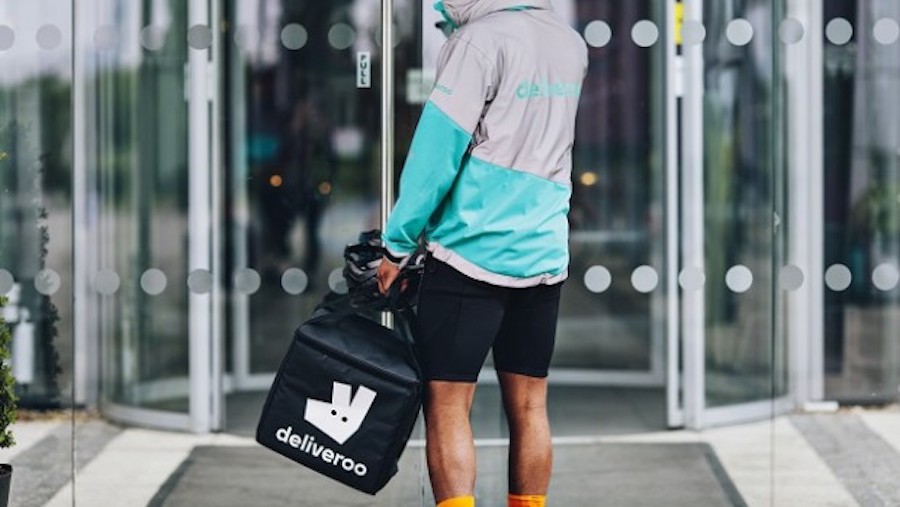
As an extra revenue source, you can reach thousands of people on these types of platforms. They do the hard work for you; you just have to prepare the food.
Food truck or cart restaurant marketing strategy plan
Here is the best food truck or cart restaurant marketing strategy you can use for your marketing:
Food trucks or carts have become incredibly popular. They are great for urban cities and for organised events.
A lot of popular restaurants are using food trucks or carts to extend their business and to test their food in different areas.
Word of mouth
Word of mouth is a food truck’s second-best marketing asset.
Deliver amazing food at good prices and people will start talking about your food truck business.
Queues and social proofing
Social proofing and queue forming is actually a food trucks best and number one marketing asset.
If people see other people queuing for your food at your truck or cart, then psychologically it persuades other people to join as well.
You see this at events quite often when there are multiple food trucks or carts. If a particular food truck has a long queue, people assume it’s really good.
On the flip side, if a cart doesn’t have a long queue and no one is there, people assume it’s not good because it’s not popular.
Always make sure people are hovering around your food cart. The easiest way to do this of course is to actually serve amazing food.
If you’re struggling, even when your food is amazing, try offering amazing bundles and deals. Your carts position may also make a difference.
It seems backwards, but you also shouldn’t serve your food too quickly. If a large queue is forming, you obviously don’t want people queuing for too long. But if there are only a few people, make the food extra special with more love and more and more people will come.
Digital Marketing
Instagram marketing
As a food truck you shouldn’t have to put too many resources into digital marketing as it’s likely your sales will come largely from foot traffic.
That in mind there are some mediums you should be using.
Instagram is one of them, especially user-generated content on social media.
First you need to create amazing photo-worthy food. This will naturally persuade people to take photos of your food and upload it to Instagram.
You can encourage that they tag you, so you can find the food yourself. Next you can upload the photos to your own feed and credit them in the caption.
On your food truck you should display your Instagram handle clearly, as people nowadays like to look up food they’re about to buy.
When they land on your profile, they will then see all of this amazing content from different people (which is social proofing).
It will give them a clear picture for what they’re about to order.
Influencer marketing
In connection to Instagram, influencer marketing is huge.
If you happen to have an influencer visit your food truck, hopefully they will snap your food and upload it.
If your food truck or cart is often at the same spot each week (like many are at markets), you could even invite food influencers to come and try your food.
Their followers will see the content and then want to visit themselves.
Twitter marketing
Mexicue in New York uses Twitter to Tweet out their location on a daily basis.
This adds excitement for their loyal fans to come and find them.
You can use Twitter marketing for your food truck company by connecting with your fans and for promoting new food items.
Join a food group
In your area there will be ‘food groups’ that help food trucks and carts get into events.
Usually big event organisers don’t approach individual food trucks or carts to feed their attendees. Usually they approach one group that has an array of food trucks and carts on their books which can then pitch to be included.
Make sure your food cart business is part of these different groups.
Traditional Marketing
At events you can rely on traditional marketing for more footfall for your food truck business.
Think sandwich boards, flyers and posters.
You need a queue, and if you don’t have one you can always rely on traditional marketing.
Café restaurant marketing strategy plan
Here is the best cafe restaurant marketing strategy you can use for your marketing:
A café marketing plan is slightly different to a restaurants marketing plan, due to the focus being on the coffee/hot drinks being sold compared to the food.
The target audience is probably slightly different as well. You could only take walk-ins or have a booking system.
The café marketing plan should still be multi-level with the focus of increasing the number of customers attending.
Here are some café restaurant marketing best practices:
Branding
The job of your branding for your café is to let customers know there’s quality coffee and food being served.
To do this all of your branding needs to be top quality as well. From the design of the logo, to the décor, everything needs to be perfect. This even includes how your staff are trained.
Your branding should also be implemented with reach in mind. For example, your brand should be on the takeaway coffee cups so people can see them. And food should be unique and good, so it appears on social appear.
Word of mouth and experience
Cafes have become an increasingly popular place to meet. People meet friends, meet colleagues and even work from cafes all day.
The experience of your café needs to be so good that people not only want to attend, but they also tell their friends to attend as well.
Social proofing
Social proofing is the idea that individuals are all the more ready to buy something if lots of others are also attending.
For your café restaurant, the more people that go, the more people will trust it’s a good café and there will be a snowball effect.
If no one is attending your café then people will assume it’s no good and not a good place to go.
Digital Restaurant Marketing Strategies
More and more people are using mobile to find cafes and this is why digital marketing is incredibly important.
Here are some good practices for implementing digital marketing for your café restaurant.
Website
As a café restaurant, you will probably mainly get walk-ins, but you could implement the ability for people to be able to book directly on your website.
If you are looking to take bookings, you need to make sure it’s a fool-proof platform that’s easy to navigate to.
Also make sure your website works flawlessly on every single platform. Test your website across multiple devices, including tablets and different operating systems.
The aim of your website shouldn’t be to just get bookings, as not every visitor will be ready to book.
The other aim is lead generation, which means grabbing the contact information of your website’s visitors.
One effective way of doing this is via lead magnets. Lead magnets are usually pop-ups or buttons that incentivise visitors to give their email.
One example and one that would work really well for a cafe is to implement a free coffee lead magnet on exit.
To get a free coffee the website visitor simply gives you their information. You can then email them with the details on how to claim their free coffee.
Lead magnets aren’t the only way you can gather an email database of potential customers.
You can also offer free Wi-Fi in your café. In return they give you their email address (make sure they opt-in to marketing emails).
Once you have a good email database you can send out promotional emails.
As well as including discounts and promotions, your emails should be engaging with clever hooks. A hook is something that adds value for the receiver.
Before hitting the send button, ask yourself that if you received the same email, would it add value to your life? Would you find it useful? Or would hit delete within 2 seconds?
Make sure your emails include hooks and they add value, otherwise don’t send them at all.
Directories
Your café restaurant needs to be able to be found easily. Over 80% of cafes are now found online.
People use sites like Tripadvisor and Google to find cafes to attend on their laptops, tablets and mobiles.
You need to make sure you apply to be on every single directory. There are more than just the big ones too, you can try searching for drinks on the app stores to see what apps can list your café for free.
Social media
Your café should be active on every single social platform there is:
– Instagram
– Bloc
– Facebook
– Twitter
– Tik Tok
– Snapchat
– Pinterest
Just to name a few.
Each platform has its own userbase that can interact with your café. By engaging with your customers, you can get repeat custom and build rapport.
SEO
When someone searches for cafes in a specific area on Google, Google returns 3 results. This is known as Google’s local pack.
SEO can help your cafe get in these top 3 results. The basic formula is that keywords on your site + number of reviews + Google average reviews = top 3.
The Google pack naturally gets more clicks to a website because it’s at the top of Google. But underneath these results are organic articles that should also be considered.
Reach out to these articles and see if your cafe can be included.
Google search ads
Above Google’s local pack and organic search results lies Google ads.
You can pay to have your cafe featured here.
Remember to only target your exact audience in a small radius around your cafe as Google ads can be very expensive depending on how many companies are competing to also appear.
Online press
There are lots of websites that promote cafes in the form of feature articles.
Reach out to these types of websites and see if you can feature.
They will probably send someone to try your café, so make sure everything is to an extremely high standard.
Review sites
We now live in a review economy.
Every single business and café will have a review somewhere online that people will use when deciding whether to eat there or not.
Keep on top of review websites by making sure they are, on the most part, positive.
If you see a negative review you can respond in a professional manner if it’s not a fair review.
The most important thing is to take the feedback onboard and continuously improve your café.
Bloc
You can advertise your cafe on Bloc and only pay if someone attends.
Bloc uses geo-location technology to track its advertising. It’s the only pay-per-result platform of its kind.
And at only £2 per customer it’s risk-free and budget friendly.
Your cafe will be pushed to every single Bloc user within a 10-mile radius of the venue, so the advertising is extremely well targeted.
There’s no cost for impressions or clicks like Facebook or Google. You only pay if they actually go.
Loyalty Programmes
Getting repeat customers is important for any café.
Having to continuously advertise to new customers can be expensive and unsustainable.
Instead you should concentrate a lot of your efforts in your current customers. Loyalty programmes can work brilliantly for cafes because it’s an incentive to keep coming back.
If you don’t have the budget, you can implement a stamp system. For every coffee bought they can get ‘stamped’. Then once they have been 9 times, they can get the 10th coffee for free, for example.
Alternatively, you can avoid people cheating the system by going digital.
Traditional Marketing
Traditional restaurant marketing strategies can still be super effective for cafes.
Cleverly positioned ads at bus stops, billboards, city centres and the like can persuade passers-by to visit a café.
For example, you could advertise to people coming out of a tube station in the mornings so they can get their morning coffee at your café.
Delivery Service
Deliveroo and UberEats have become incredibly popular due the increase in demand of convenience.
As an extra revenue source, you can reach thousands of people on these types of platforms. They do the hard work for you; you just have to prepare the food and drinks.
Love Walk in Fulham is a café that is on Deliveroo. They receive more orders from Deliveroo than they do from walk-in customers.
